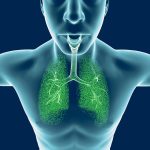CPAP Training May Help Children Improve Speech, Small Study Shows

Training with continuous positive airway pressure therapy, known as CPAP, may help to normalize speech abnormalities in children with Pompe disease, a small pilot study shows.
Certain outcomes, including the speech intelligibility score (SIS), “were significantly improved” over the course of the six-month study, but as two of the five children enrolled did not complete it, the researchers are calling for additional testing.
“Further studies with longer follow-up in a larger cohort [group] … are warranted to demonstrate the benefit of CPAP training in children with” Pompe, the team wrote.
The study, “A pilot study shows the positive effects of continuous airway pressure for treating hypernasal speech in children with infantile-onset Pompe disease,” was published in the journal Scientific Reports.
Owing to abnormalities in the development of the muscles and nerves that control speech, many children with Pompe experience speech disorders. Hypernasality — abnormally “nasal” speech — is especially common among patients with Pompe.
CPAP, best known for its use in treating nighttime sleep problems, is a therapeutic approach that uses a machine attached to a mask worn over the nose and mouth. The machine increases the air pressure in the throat when the person breathes in. The devices are commonly used for sleep apnea, when a person repeatedly stops breathing when they’re asleep.
Emerging research is suggesting that CPAP also may be useful for strengthening the muscles needed for talking, which could help lessen hypernasality and other speech disorders.
To date, no study has evaluated this application of CPAP in children with Pompe disease or similar conditions.
To test the feasibility of such an approach, scientists in Taiwan conducted a small study involving five children with infantile-onset Pompe disease, or IOPD. The participants — two boys and three girls — ranged in age from about 5 to about 9. All had started on enzyme replacement therapy shortly after birth, and all had begun attending school at a typical age.
The researchers designed a three-part study that took place over about six months. In the first part, the children underwent standard weekly speech therapy.
In the second part, children continued receiving standard speech therapy, and also were given CPAP training, which consisted of doing a series of vocalization exercises — for example, reading aloud from a storybook — while attached to a CPAP machine. These trainings were done six days per week and lasted 10 to 24 minutes, with increasing times over the course of the study.
In the final, follow-up part of the study, the children stopped CPAP training. Throughout the study, the researchers performed regular assessments of hypernasality and other speech qualities.
Of the five children enrolled, only three completed the study. One child did not come to enough hospital visits to continue participating, and another stopped using the CPAP machine after the first week of the study.
Among the three children who finished the study, the researchers noted that two of them experienced some difficulty getting used to the CPAP machine, with complaints of discomfort wearing the mask and mucus leaking from the mouth/nose. This required taking some time to get used to the machine, and adjusting equipment to find a comfortable fit.
“Adjusting the headwear to a comfortable tightness before starting treatment and allowing pauses during CPAP training can help improve patients’ comfort and ensure their compliance with the training program,” the researchers wrote. They also stressed that it’s important to keep the machine clean of mucus or other secretions.
In all three participants who finished the trial, CPAP training was associated with a marked decrease in hypernasality, which persisted after CPAP training was stopped, particularly in two children.
CPAP training also led to some improvements in overall intelligibility scores — that is, how easy it was to understand the children when they spoke.
“In this study, CPAP training effectively reduced hypernasality and improved overall speech intelligibility in children with IOPD,” the researchers wrote.
They added that this study is “the first to demonstrate that CPAP training could effectively improve speech function even in the context of progressively deteriorating neuromuscular disorders [like Pompe disease] and that the effect could persist even 2 months after the cessation of training.”
The team stressed that this study is limited by its small size, and noted that, with two of the five children not completing the study, there may be practical barriers to implementing CPAP in everyday use.
“CPAP training is safe for children with IOPD and should be the first intervention considered for reducing their hypernasality and improving their speech intelligibility if the availability of those specialized equipment for CPAP training is not an issue,” the team concluded.








